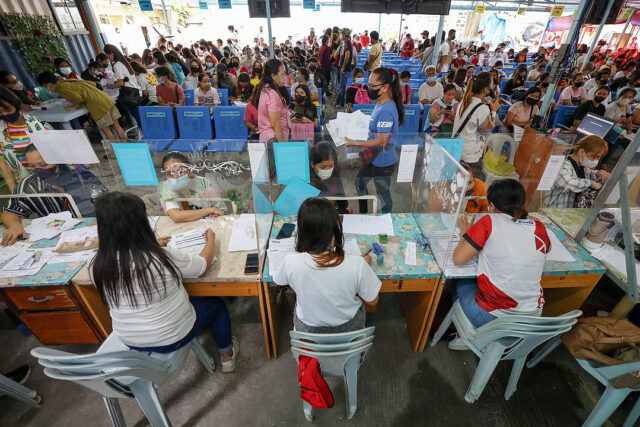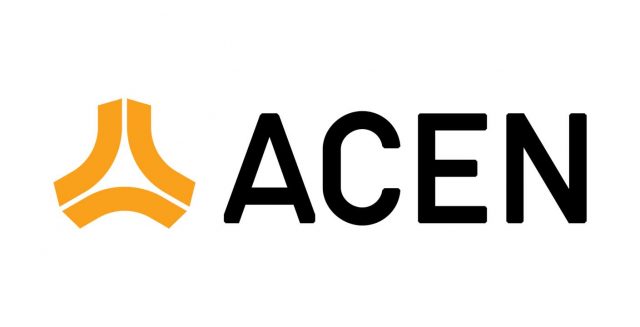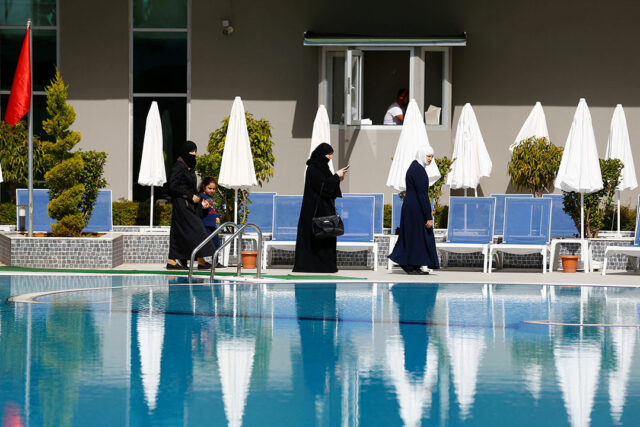Pop star Taylor Swift backs Harris in boost to campaign
PHILADELPHIA — Democratic candidate Kamala Harris put her Republican rival Donald Trump on the defensive in a combative presidential debate on Tuesday with a stream of attacks on his fitness for office, his support of abortion restrictions and his myriad legal woes.
A former prosecutor, Ms. Harris, 59, controlled the debate from the start, getting under her rival’s skin repeatedly and prompting a visibly angry Mr. Trump, 78, to deliver a series of falsehood-filled retorts.
At one point, she goaded the former president by saying that people often leave his campaign rallies early “out of exhaustion and boredom.”
Mr. Trump, who has been frustrated by the size of Ms. Harris’ own crowds, said, “My rallies, we have the biggest rallies, the most incredible rallies in the history of politics.”
He then pivoted to a false claim about immigrants eating pets in Springfield, Ohio, that has circulated on social media and was amplified by Mr. Trump’s vice-presidential candidate, Senator JD Vance.
“They’re eating the dogs!” he said, as Ms. Harris laughed in disbelief. “The people that came in, they’re eating the cats! They’re eating the pets of the people that live there.”
“Talk about extreme,” Ms. Harris replied.
With eight weeks to go before the election, and days until early voting starts in some states, the debate — the only one scheduled — offered a rare opportunity for both candidates to make their case for a television audience of tens of millions of voters.
The candidates clashed over immigration, foreign policy and healthcare, but the debate was light on specific policy details.
Instead, Ms. Harris’ forceful approach succeeded in putting the focus on Mr. Trump, leaving her allies jubilant and some Republicans acknowledging Mr. Trump’s struggles.
Mr. Trump repeated his false claim that his 2020 election defeat was due to fraud, called Ms. Harris a “Marxist” and asserted falsely that migrants have caused a violent crime spree.
“Trump missed an opportunity to stay focused prosecuting the case against Biden-Harris on the economy and border, and instead took her bait and chased down rabbit holes on election denialism and immigrants eating our pets,” said Marc Short, who served as chief of staff for Mr. Trump’s former Vice-President Mike Pence.
SWIFT ENDORSEMENT
In a boost to the Harris campaign, pop megastar Taylor Swift told her 283 million followers on Instagram immediately following the debate that she would back Vice-President Harris and her running mate Tim Walz in the Nov. 5 election.
She signed it “childless cat lady,” a reference to controversial remarks made by Mr. Vance.
Online prediction market PredictIt’s 2024 presidential general election market showed Mr. Trump’s likelihood of victory declining during the debate, to 47% from 52%. Ms. Harris’ odds improved to 55% from 53%.
In a sign of confidence in the debate’s outcome, Ms. Harris’ campaign challenged Mr. Trump to a second round in October.
Mr. Trump afterwards took the rare step of going into the nearby “spin room,” a job usually left to supporters, where he told reporters, “This was my best debate.”
Asked about the Harris campaign seeking a second debate, Mr. Trump told Fox News: “She wants it because she lost.”
“I have to think about it, but if you won the debate, I sort of think maybe I shouldn’t do it. Why should I do another debate?” he said.
Mr. Trump, who has spent weeks launching personal attacks on Ms. Harris including racist and sexist insults, largely avoided that pattern during the debate’s early moments but quickly became agitated under Ms. Harris’ offensive.
Mr. Trump was asked by the moderators about one of those attacks, when he told an event with Black journalists in July that Ms. Harris had recently “become a Black person.”
“I couldn’t care less,” he said. “Whatever she wants to be is OK with me.”
Ms. Harris, who has both Black and South Asian heritage, responded, “I think it’s a tragedy that we have someone who wants to be president who has consistently over the course of his career attempted to use race to divide the American people.”
She criticized Mr. Trump over his criminal conviction for covering up hush money payments to a porn star as well as his other indictments and a civil judgment finding him liable for sexual assault. Trump has denied wrongdoing and again accused Ms. Harris and the Democrats of orchestrating all of the cases without evidence.
The debate got under way at 9 p.m. ET (0100 GMT on Wednesday) with a surprise handshake between the two opponents, who had never met before. Ms. Harris approached Mr. Trump at his lectern, introducing herself by name, in what was the first handshake at a presidential debate since 2016.
The encounter was particularly important for Ms. Harris, with opinion polls showing that more than a quarter of likely voters feel they do not know enough about her. Harris entered the race only seven weeks ago after President Joseph Biden’s exit.
Ms. Harris delivered a lengthy attack on abortion limits, speaking passionately about women denied emergency care and victims of incest unable to terminate their pregnancies due to statewide bans that have proliferated since the US Supreme Court eliminated a nationwide right in 2022. Three Trump appointees were in the majority of that ruling.
She also claimed Mr. Trump would support a national ban. Mr. Trump called that assertion untrue but declined to say explicitly that he would veto such a law.
Mr. Trump, who has sometimes struggled with messaging on abortion, said falsely that Ms. Harris and Democrats support infanticide, which — as ABC News moderator Linsey Davis noted — is illegal in every state.
Ms. Harris also sought to tie Mr. Trump to Project 2025, a conservative policy blueprint that proposes expanding executive power, eliminating environmental regulations and making it illegal to ship abortion pills across state lines, among other right-wing goals.
Mr. Trump retorted that he has “nothing to do” with Project 2025, though some of his advisers were involved in its creation.
Ron Bonjean, a Republican strategist, said Mr. Trump “didn’t do himself any favors” but added that it remains unclear whether Ms. Harris’ performance will change the race’s dynamics. Polls show a vast majority of Americans have made up their minds, leaving a small sliver of undecided voters up for grabs.
CLASHES ON ECONOMY, FOREIGN POLICY
The candidates opened the debate by focusing on the economy, an issue that opinion polls show favors Mr. Trump.
Ms. Harris attacked Mr. Trump’s intention to impose high tariffs on foreign goods — a proposal she has likened to a sales tax on the middle class — while touting her plan to offer tax benefits to families and small businesses.
Mr. Trump criticized Ms. Harris for the persistent inflation during the Biden administration’s term, though he overstated the level of price increases. Inflation, he said, “has been a disaster for people, for the middle class, for every class.”
The candidates also exchanged barbs over the Israel-Gaza war and the Russian invasion of Ukraine, though neither offered specifics on how they would seek to end each conflict.
Ms. Harris accused Mr. Trump of being willing to abandon US support for Ukraine to curry favor with Russian President Vladimir Putin, calling Mr. Trump a “disgrace,” while Mr. Trump claimed Ms. Harris “hates” Israel — an assertion she rejected.
Presidential debates do not necessarily change voters’ minds, but they can be deeply consequential. Mr. Biden’s poor performance against Mr. Trump in June led him to abandon his campaign on July 21.
In a contest that could again come down to tens of thousands of votes in a handful of states, even a small shift in public opinion could alter the outcome. The two candidates are effectively tied in the seven battleground states likely to decide the election, according to polling averages compiled by the New York Times. — Reuters












